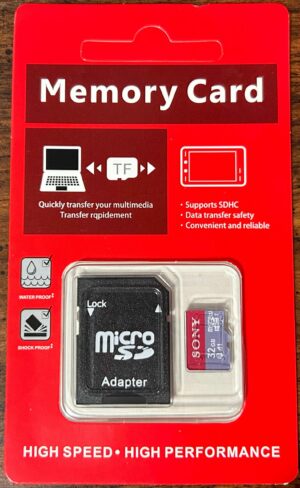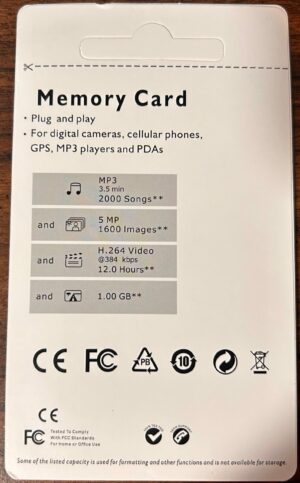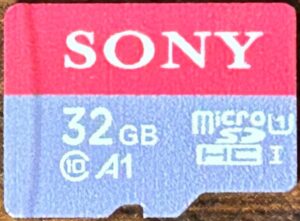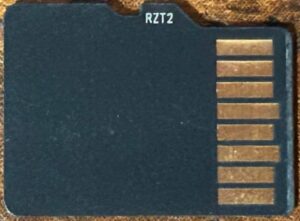- Obtained from: AliExpress
- Price paid: $4.66
- Advertised capacity: 32GB
- Logical capacity: 31,266,439,168 bytes
- Physical capacity: 31,266,439,168 bytes
- Fake/skimpy flash: Skimpy (2.29% skimp)
- Protected area: 83,886,080 bytes (inaccessible)
- Speed class markings: Class 10, U1, A1
- CID data:
- Manufacturer ID:
0x00 - OEM ID:
0x3432(ASCII:42) - Product name:
0x5344313647(ASCII:SD16G) - Product revision:
0x20 - Serial number:
0x00000378 - Manufacture date: Sep 2023
- Manufacturer ID:
- Sequential read speed (MB/sec): 67.63
- Sequential write speed (MB/sec): 17.57
- Random read speed (IOPS/sec): 1448.45
- Random write speed (IOPS/sec): 273.42
- Read/write cycles to first error: 518
- Read/write cycles to complete failure: 1,749
- Total days to complete failure: 136
- Card reader used: JJS CR-UTC4AC
- Package front:

- Package back:

- Card front:

- Card back:

Discussion
This is another card that I bought for two reasons: to see if I could find genuine flash and fake flash in the same brand, and to evaluate a knockoff brand. I believe I succeeded on both points here.
Knockoff brands like these usually follow a pretty similar M.O.: they take the name of a brand that’s a pretty well known electronics manufacturer, but who isn’t known for producing flash media (or usually any storage media whatsoever). In this respect, Sony fits this bill. Perhaps they can do this so that it’s harder to disprove that their product is genuine — if there’s no genuine article to compare it to, then it’s harder for someone to say that their product isn’t genuine. That said, I heavily suspected that this card was going to be a knockoff when I ordered it.
This card is another example where the manufacturer set the manufacturer ID to all zeroes, likely in an attempt to mask the manufacturer’s true identity. However, there are a number of cards in my collection that all share the same OEM ID and product ID, including the three Cloudisk cards, one of the Auotkn Extreme 8GB cards, and one of the Bekit 8GB cards — I’m willing to bet that all of these were made by the same manufacturer.
Performance on this card was mediocre overall. Read performance (both sequential and random) and random write performance were all average or slightly below average, while sequential write performance was pretty solidly below average. Compared to the other knockoff cards I evaluated, however, this card actually did quite well: sequential read and random write speeds were more than two standard deviations above average, and sequential write and random read speeds were one standard deviation above average. These scores were enough to merit the Class 10 and U1 markings it carries; however, both random read and random write performance fell short of the threshold for the A1 marking. I honestly don’t think there’s any way that this card would qualify for the A1 marking — and I can say that because I’m not scared of “Sony” coming after me for that comment.
On the endurance front — most of the cards I’ve tested have failed before they reached the 50% (the point where 50% of the sectors on the device have been flagged as “bad” due to verification failures or I/O errors). To this one’s credit (or not? I’m not sure), it kept chugging along right up until it hit that threshold. Don’t get me wrong — this card is still nothing to write home about, especially since it couldn’t go 2,000 read/write cycles without an error…or at all. Here’s what the progression for this card looked like:
April 2, 2024

